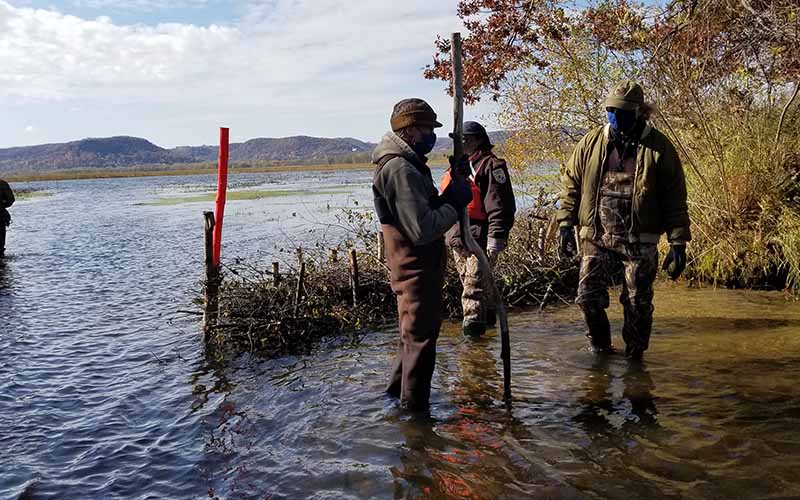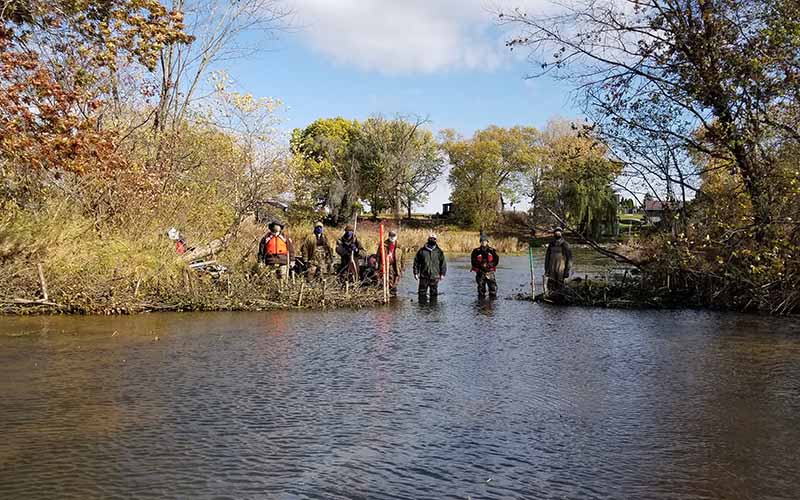Shawn Giblin is a water quality specialist at the Wisconsin Department of Natural Resources.
What has been happening on the in the Blackdeer Channel of the Mississippi River?
For years, the Blackdeer Channel on the Mississippi River area has been inundated with high water that impacted a popular ice fishing area. Significant habitat damage resulted from rates of flow 10 to 20 times greater than are optimal for fish overwintering. The damage is part of a bigger pattern impacting the backwater areas of the Mississippi due to climate change.

What did you see when you surveyed the damage?
In recent years, residents of La Crosse County alerted the Wisconsin Department of Natural Resources to a significant decline in fishing quality in Blackdeer Channel during the winter months. Ice safety was also an issue. In response, Wisconsin Department of Natural Resources surveyed the site and found significant damage to the fish habitat. The level of degradation was shocking. This is just one example of how the river is bleeding. We are dealing with double the discharge in many of our backwaters and functionality is being lost as a result.
The area has a rich history. Ho-Chunk fish camps traditionally used Blackcreek Channel as an overwinter camp. Until the 2000s, Ho Chunk elders Alvin and Muriel Blackdeer lived at the site. Muriel Blackdeer profiled the history in “An Eagle Blessed our Home,” published by Skandisk, Inc. in 1994. Today the area has a walk-down access that is heavily used by a population that includes children, the elderly, and low-income residents.
What did your survey and research show?
Data analysis showed that Mississippi River mean annual discharge, or flow, of 45,000 cubic feet per second was never exceeded from 1929-1982. Since 1982, the Mississippi has exceeded mean annual discharge of 45,000 cubic feet per second eleven times, six times since 2011. As a result of the increase in flow, the islands protecting the area have been damaged and breeched. Damage to the islands is allowing more water into the backwater channel and bringing in sediment that reduces the depth and significantly damages aquatic habitat.

What is being done?
A cooperative effort by the Wisconsin Department of Natural Resources and the Fish and Wildlife Service, and Army Corps of Engineers has led to an innovative solution. Over two days volunteers from the Brice Prairie Conservation Association harvested invasive buckthorn, constructed brush bundles, and placed them in the island breech to reduce the flow into Blackdeer Channel.
Do you have hope for the future?
This climate change adaptation project is just one of many taking place in the backwater areas of the Mississippi. While climate adaptation efforts are making a difference in key areas, many more areas need climate adaptation actions.
Learn More
- Brice Prairie Conservation Association | Fish Habitat: Blackdeer Overwintering Habitat Protection
- Wisconsin Department of Natural Resources | Mississippi River Climate Change: Status, Challenges, and Adaptations
The views and opinions expressed in this interview are those of the authors and do not represent official policy or position of the University of Wisconsin-Madison or the Wisconsin Initiative on Climate Change Impacts.
For More Information
Shawn Giblin
Wisconsin Department of Natural Resources
3550 Mormon Coulee Road
La Crosse, Wisconsin 53601
(608) 785-9995
Shawn.Giblin@wisconsin.gov